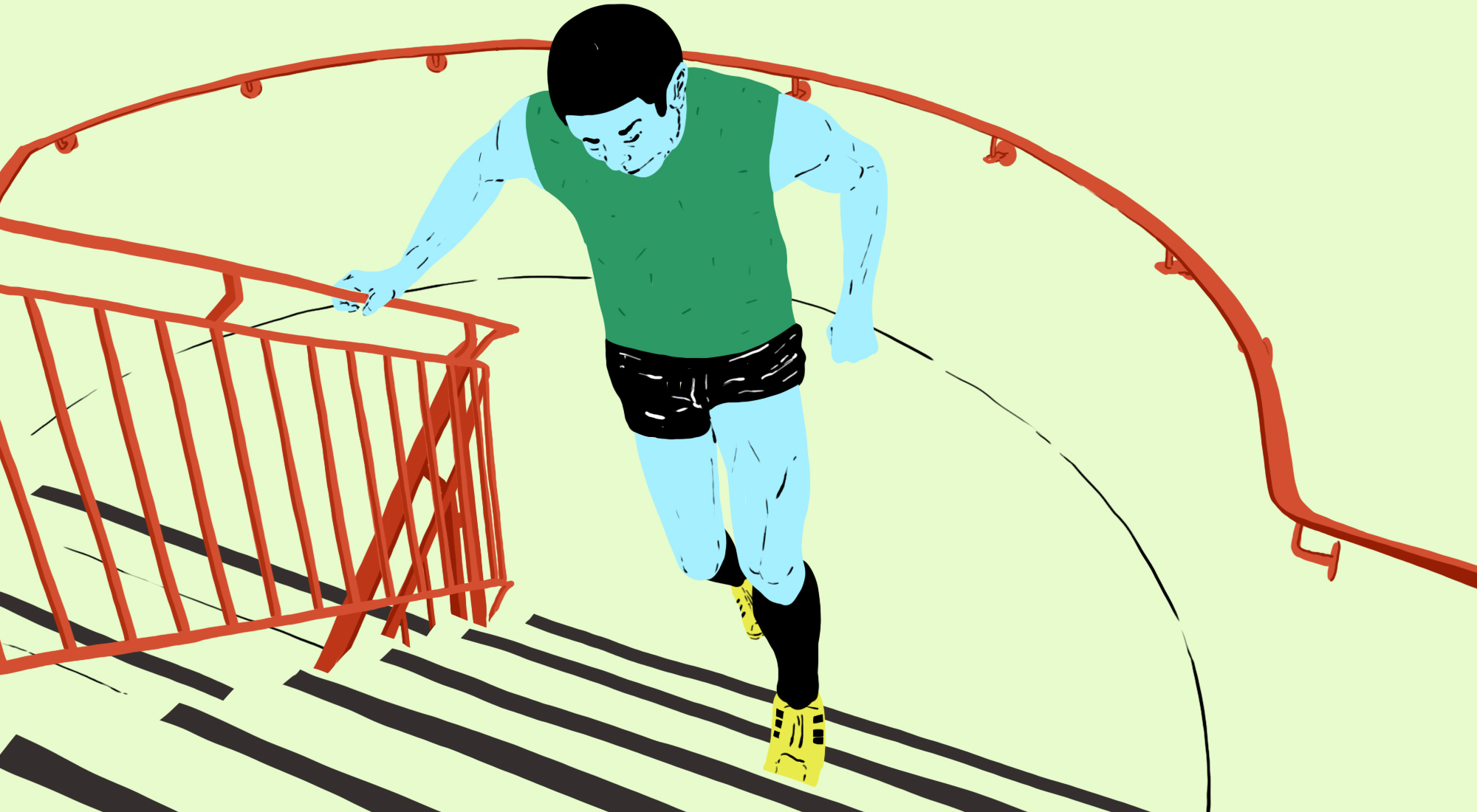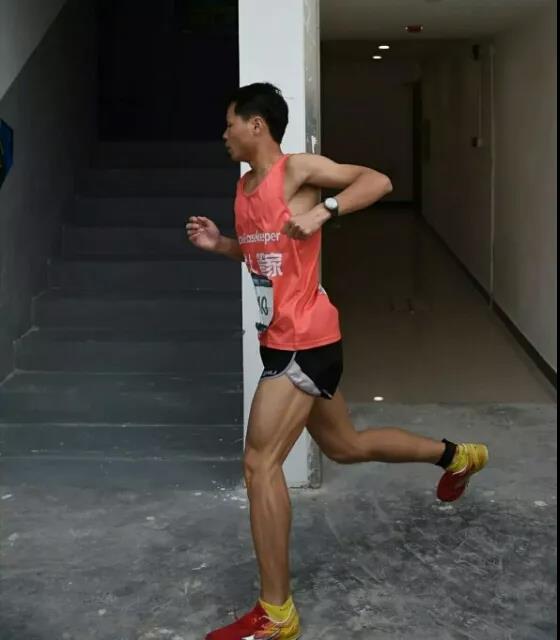Tower running finds a foothold in China
Between 2018 and 2019, more than 150 tower running races were held in China. Called "vertical marathoning" in Chinese, the sport of sprinting up skyscrapers has burgeoned in this country of tall buildings.

For most people, climbing stairs is wearisome. But not for Xuē Jiàndōng 薛剑东. His passion is tower running, the sport of racing up the stairs of skyscrapers as fast as possible. He takes this very seriously, training six times per week. “When I started it was just for fun,” Xue says, “but my goals slowly changed. I want to improve and steel myself. And while I improve my times, I can win prize money and attract sponsors.’’
Xue is part of a community of tower racers, or as they are called in Chinese, vertical marathoners (垂直马拉松 chuízhí mǎlāsōng). The sport began in 1978 when organizers in the U.S. created the Empire State Building Run-Up, requiring athletes to sprint up 320 meters to reach the observation deck. It made its way to China in 1995, when participants ran up 1,597 stairs (225 meters) of the old China Media Group Headquarters building. As the number of skyscrapers increased in China, so too did the sport’s appeal.
Between 2018 and 2019, more than 150 races were held in China. Often, one to two races happen per weekend, sometimes more. As Xue says: “On one Saturday afternoon, I participated at the Wuhan City Chángchénghuì (长城汇) tower competition, the next Sunday morning I was at the Jiangxi Nanchang Greenland Central Plaza (绿地中心 lǜdì zhōngxīn) competition, and in the afternoon, I was at a competition at Fujian’s Xiamen Cross Strait Financial Center (厦门世茂海峡中心 xiàmén shìmào hǎixiá zhōngxīn), three events in two days. The distance between the races exceeded 1,000 kilometers. I used all kinds of transportation to get there — and at all the races I got second.”

The intensity of the races can be extreme. Athletes often push themselves to the limits of their stamina. For Xue, one attractive aspect of the sport is the way it trains his willpower. “[At work], sometimes there are projects that other people won’t do, but I dare to do them. The sport has made me become braver and more persistent.”
He also wants to win — everyone does — but tower running is about much more than that. Xue has found friends through the events, who go through the same pain. For him, races are a place to meet with his brothers. Even though they live all over the country, they gather two to three times a month at races, hang out afterwards, dine together and watch occasional movies. “That is also awesome,” Xue says.
The races can be extremely close: Athletes usually run with electronic chips to measure their time. They do not all start at once, which could be dangerous. Instead, athletes usually race in small groups of two to four people. Often, racers don’t know the winner until after the last group finishes. “Our time differences are often less than one second, sometimes even less than one-tenth of a second,” Xue says. “In 2017, my friend Liàngliàng 亮亮 and my time differed by only one second in five races.” That year, China Merchants Bank awarded both athletes with a certificate for being part of the group with the best chemistry.
Tower running has also become a way for real estate companies to promote their skyscrapers and find sponsors, who together fund the races and top athletes. A small number of events have, as their main goal, the promotion of the sport itself. Xue is optimistic that China will eventually become a big country for tower running. “Many government departments and private enterprises have made great efforts to promote the sport,” he says. For example, the company Ticker Sport (垂马体育 chuí mǎ tǐyù) met in 2016 with representatives of the General Administration of Sport, General Office of the State Council, and the local Guangdong sports ministry and got permission to hold vertical marathons in Guangzhou. Governmental departments support the events, as they align with China’s ambitions to develop as a sports nation.
Some of China’s tower races, such as the Shanghai International Vertical Marathon — which is part of the World Towerrunning Tour — attract the world’s tower racing elite. Malaysia’s Soh Wai Ching, one of the world’s best stair runners, told The China Project: “I did many races in China and I enjoyed the race at Shanghai Tower, as it is the tallest building in the world to have tower running races.”
“The race had many volunteers to help out and to ensure the race went smoothly,” he continued. “Many sponsors were there for this race, and the environment was so great.”
Soh sees the potential of tower running in China. He has even considered moving to China permanently: “The reason for basing myself in China is to share my experience and work with the three main organizers…I also wish to attempt a Guinness World Record at Shanghai Tower” — greatest vertical-height stair climb in one hour and fastest vertical-mile stair climb. “I am planning to get sponsors in China and promote the sport to a much higher level.”

However, quarantine regulations due to COVID-19 have put an end to international participation in tower racing in China…for now.
In the meantime, domestic racers like Xue Jiandong are going strong. He continues to train by running up stairs in the cities or up mountains around his home in Shenzhen, and strengthening his core. “I want to participate in all the famous races all over the world, such as the New York Empire State race and the Eiffel Tower race in Paris.” he says. Then, putting his twist on an old Chinese idiom, he adds: “It’s better to climb ten-thousand stairs than to read ten-thousand books.”
